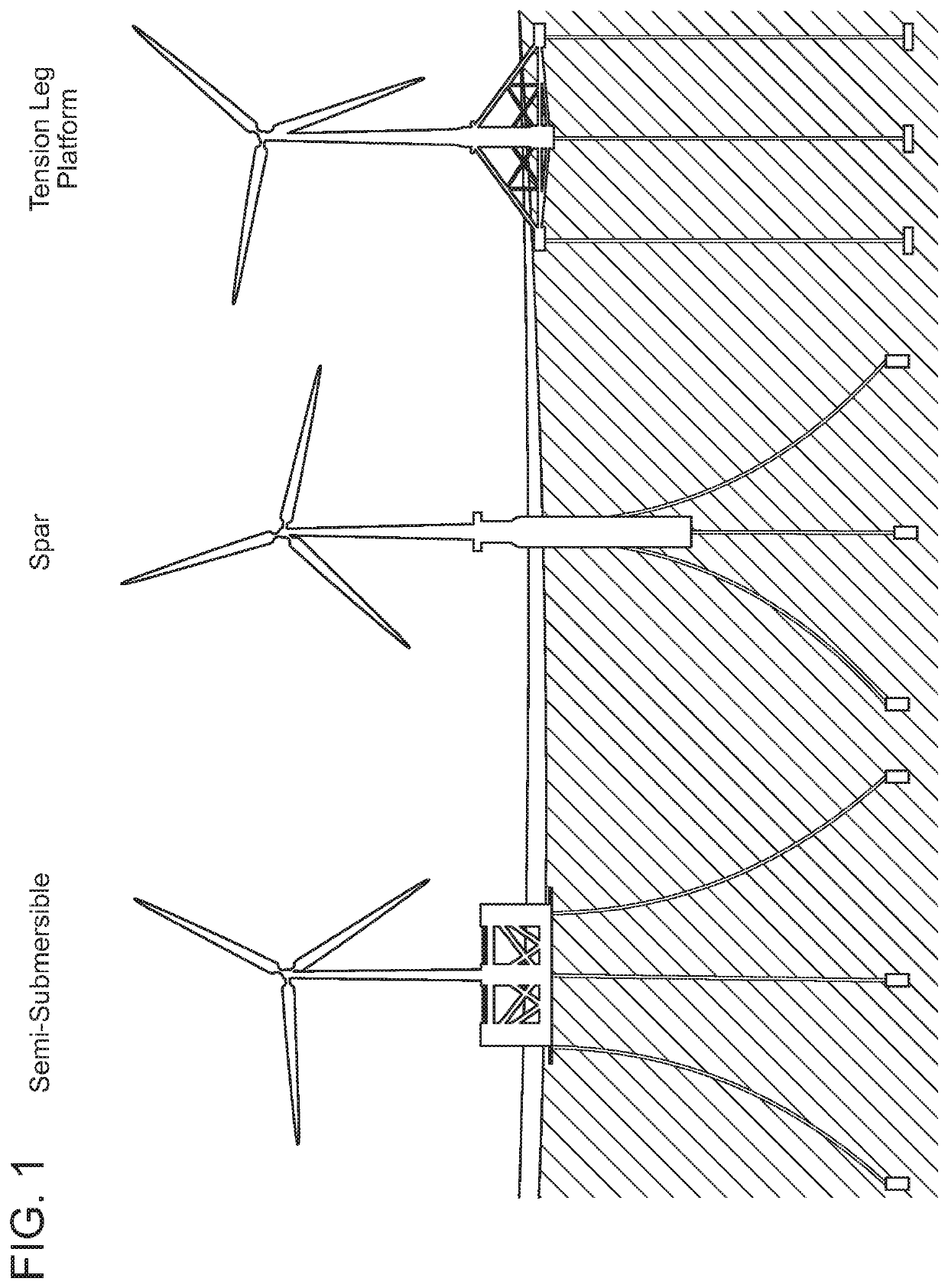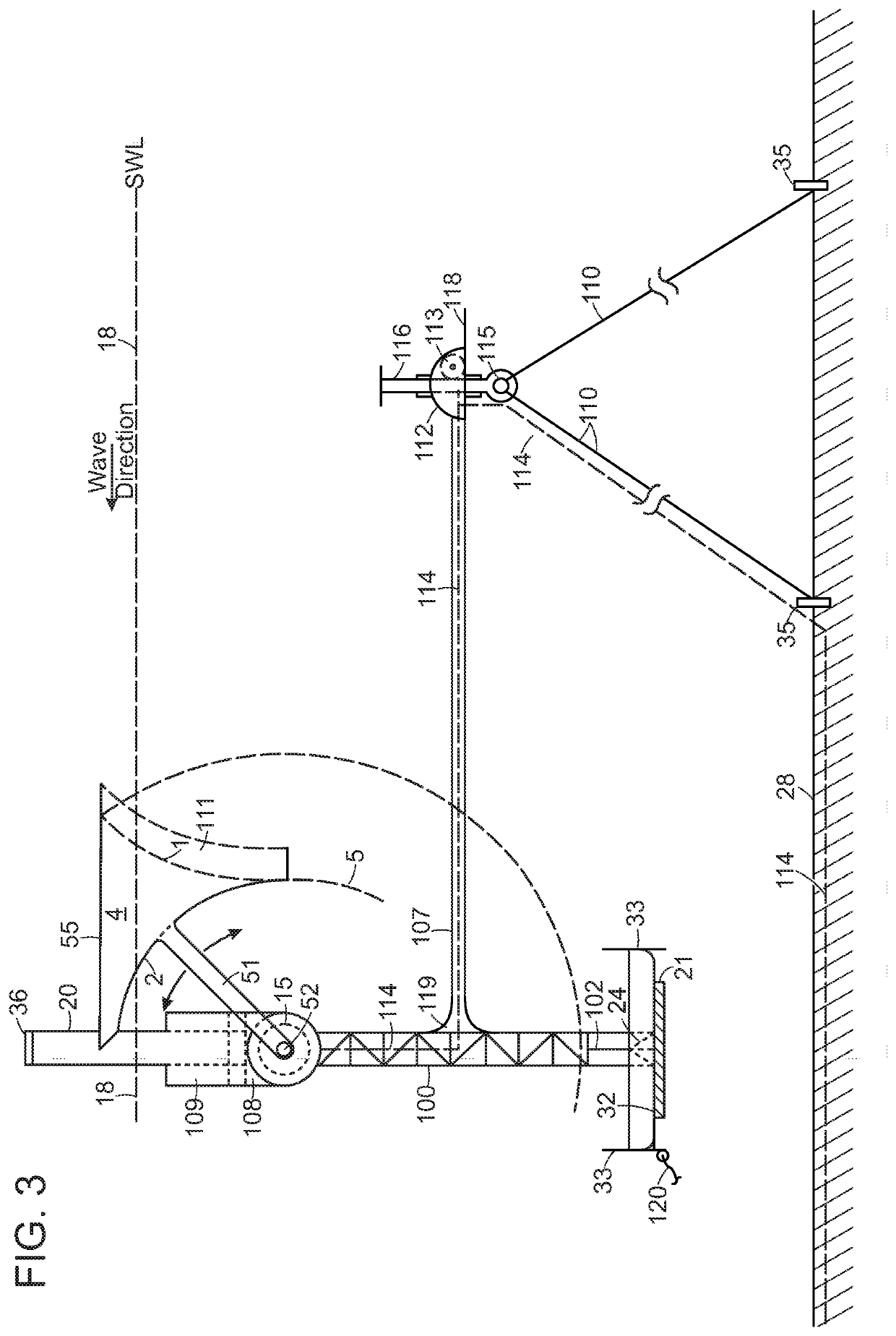Cantilevered tension-leg stabilization of buoyant wave energy converter or floating wind turbine base
a technology of tension legs and wind turbines, which is applied in the direction of mechanical equipment, mechanical energy handling, machines/engines, etc., can solve the problems of limited effectiveness of multiple tension legs attached directly to floating or semi-submerged bases, restricted self-orientation (weather-vanning) of the base and any attached wec device, and submerged depth of such bases, etc., to achieve the effect of low capex, limited effectiveness against lateral motion stabilization, and light weigh
- Summary
- Abstract
- Description
- Claims
- Application Information
AI Technical Summary
Benefits of technology
Problems solved by technology
Method used
Image
Examples
Embodiment Construction
[0039]Referring now to FIG. 1, three of the most generic proposed FWT bases are illustrated, the Semi-Submersible, the Spar (Buoy or Mono-Spar), and the Tension Leg Platform, respectively from left to right. The Spar-Buoy is employed by Equinor in their Hywind Scotland project using five 6 MW FWTs. It utilizes a buoyant semi-submerged elongated vertical spar, with a typical submerged depth of ⅓rd to ⅔rds the length of the above SWL wind turbine tower. The submerged spar section is typically of hollow construction with at least the lower portion having one or more cavities for the admission (and expulsion) of seawater ballast. High density solid ballast (typically metal or concrete) is usually placed at or near the bottom to maximize the distance between the center of buoyancy and the center of gravity (including the mass of the wind turbine and its tower) for improved pitch stability. The Spar-Buoy semi-submerged base is slack moored via multiple cables.
[0040]The Semi-Submersible is...
PUM
 Login to View More
Login to View More Abstract
Description
Claims
Application Information
 Login to View More
Login to View More - R&D
- Intellectual Property
- Life Sciences
- Materials
- Tech Scout
- Unparalleled Data Quality
- Higher Quality Content
- 60% Fewer Hallucinations
Browse by: Latest US Patents, China's latest patents, Technical Efficacy Thesaurus, Application Domain, Technology Topic, Popular Technical Reports.
© 2025 PatSnap. All rights reserved.Legal|Privacy policy|Modern Slavery Act Transparency Statement|Sitemap|About US| Contact US: help@patsnap.com



